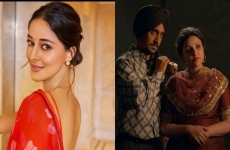A R Rahman doesn't want his songs to be used in background
18 Aug 2014
In the 1970s, part of the Golden Era of film music, one of Bollywood's most prolific filmmakers Basu Chatterjee would often force his songs into the background. Immortal melodies like 'Rajanigandha Phool Tumhare' (Rajnigandha), 'Na Jaane Kyon Hota Hai Yun Zindagi Je Saath' (Chotisi Baat), 'Yeh Din Kya Aaye Lage Phool Hanse' (Chotisi Baat), 'Yeh Jeevan Hai Iss Jeevan Ka Yehi Hai Rang-Roop' (Piya Ka Ghar) , Lata Mangeshkar's version of the tandem 'Rimjim Gire Saawan' (Manzil) and 'Tere Bin Kaise Din Beete Sajna' (Priyatama) were relegated to the background in Basu Chatterjee's films.
Says a very distinguished director, "Basu da was a great director. But he just didn't know how to use those beautiful songs. He would put them in the background because he was uncomfortable with lip-sync numbers." A lot of progressive directors today feel the same way as Basu Chatterjee. Shoojit Sircar and Rakeysh Omprakash Mehra have decided not to have lip-sync songs in their films.
And composer A R Rahman is unhappy about this development.
Says the composing maestro, "A lot of my very good songs in films like Rang De Basanti and Delhi 6 were used as soundtracks in the background. They were not used as lip-sync. So the reach of those songs was just 30 or 40 percent of what it was meant to be." A R Rahman feels songs lip-sync songs make a much greater impact. "Songs that are sung by major stars on screen get played in clubs and on radio. They make a psychological impact on the audiences' mind." A R Rahman is looking for a more prominent outlet for his creativity. "One reason why I want to do music in young stories is because these films allow their actors to sing on screen."




